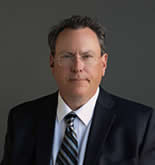The most common crossing accidents are simple vehicle-pedestrian accidents where a car, SUV or pickup truck strikes a pedestrian. Because impact forces closely reflect the inverse of the square of the masses, no pedestrian is a remote match for even the slightest automobile traveling at a crawl. As a simple illustration, a 100-lb. pedestrian colliding with a 2000-lb. car will not experience twenty time the impact forces that the vehicle does. He or she will effectively receive 400 times the impact forces. The degree of damage is obviously compounded by the vehicle’s speed.
At the lawsuit level, these are usually simple tic-tac-toe games: The pedestrian’s attorneys will argue that the motorist was not looking, while the motorist’s attorneys will argue that the pedestrian “came out of nowhere,” and that the motorist never saw him or her. The truth usually lies somewhere in between. Typically, the motorist indeed saw the pedestrian before striking him or her, but was traveling too fast to stop before the collision (see https://transalt.com/article/the-folly-of-fake-facts/ and https://transalt.com/article/the-folly-of-fake-facts-part-2/ ).
These cases become more complex when either a large vehicle (e.g., a bus or truck) strikes a pedestrian or when a personal vehicle does because of errors or omissions made by a larger third-party vehicle – most typically, a schoolbus. (see http://crossingaccidents.com ). Statistically, more schoolbus passengers are actually killed or seriously injured when off the bus (i.e., while crossing) than when on board (when it is moving). In other cases most typical of transit buses – pedestrians of all ages are nailed while traversing crosswalks because the buses roll through turns at moderate speeds -- instead of stopping or coming to a crawl before turning (see http://turningaccidents.com). These “rolling turns” are particularly common to buses providing transit service because their schedules are too tight (see https://transalt.com/article/tight-schedules-part-3-fixed-route-transit-service-2/ ), and as a result, drivers are forced to make countless compromises to passenger, pedestrian and motorist safety as a consequence (see http://safetycompromisescom) and https://transalt.com/article/safety-compromises-part-9-rolling-turns-and-sharp-turns/).
In terms of schoolbus-related crossing accidents, most victims are struck by third-party vehicles (cars, trucks, SUVs, etc.) when their drivers ignore the red flashers and stop arms engaged during the students’ crossing. But these drivers are not always at fault: Bus stops must be selected properly (see https://transalt.com/article/who-picks-the-stops/ ). Bus passengers must cross properly with respect to the type of bus they are riding (see https://transalt.com/article/stop-positioning-and-crossing-orientation/). Buses must be properly positioned at the bus stop (see https://transalt.com/article/bus-positioning-and-alignment/ ). Drivers’ view of oncoming traffic must not be compromised (see https://transalt.com/article/blocking-the-windshield-compromising-the-view-eliminating-blind-spots/ ). Proper crossing procedures must be executed by the drivers (see https://transalt.com/article/directing-the-students-across/ ). And crossing policies must make sense (see https://transalt.com/article/distinguishing-between-the-bus-stop-and-waiting-area/ ). One patently stupid policy that is commonly in place is the instruction to students to arrive at their bus stop five or 10 minutes before their bus is scheduled to arrive – a policy which dooms countless students who must cross to their stops ...before the bus arrives with its driver’s execution of procedures and the bus’ crossing devices available to assist them.
Particularly in lawsuits involving schoolbuses whose crossing students are struck by third-party vehicles, the school district’s or its contractor’s attorneys generally argue that the incident was the fault of an oncoming motorist, or one passing the bus – when the buses’ red flashers and stop arms were engaged. For the bus driver and his or her employer to not be liable, three major things must be established: (a) the bus stop was properly located, (b) the driver correctly aligned the bus with the stop and (c) the driver properly executed all seven basic steps of crossing procedures. What muddles up so many lawsuits is the fact that few school districts and few training documents correctly identify these procedures.
Another tragedy that often muddles these lawsuits is that students and/or their parents are not properly trained about crossing procedures (as, again, drivers rarely are). Students and/or their parents often assume that when the red flashers and stop arm are engaged, they signal that it is safe for the student (with or without a parent) to begin crossing. This is not the case: The driver has three more steps of proper crossing procedures to execute before the student (with-or-without his or her parent) steps into the roadway. So often the fault lies with both the motorist and the student and/or parent, or largely with the student and/or his or her parent and not the motorist at all. Often missed is the role that the school district’s policy and training failures play in this equation, when a school district fails to properly teach crossing procedures to students and/or their parents.
Otherwise – in crossing accidents and many other accident or incident scenarios, there is often a significant difference between causation and blame (see https://transalt.com/article/causation-and-blame-inconsistencies-between-regulations-and-reality/). Plus, at the operating level, shenanigans often cloud legitimate efforts to assign blame to the appropriate parties (see https://transalt.com/article/compromising-safety-to-reduce-liability-exposure/ ). Yes, some school districts – Baltimore and Osceola, FL – actually instruct schoolchildren to cross behind the schoolbus, where motorists do not expect them to. (The crooked defendant’s goal is to get the bus over the horizon when the striking vehicle runs over the student now forced to jaywalk across the roadway because the school district effectively abandoned efforts to protect the student -- to avoid having its schoolbus show up in the diagram on the police accident report.
Both the logic and justice of resolving crossing cases – and almost any type of case, particularly involving public transportation – are skewed, often beyond recognition, by by some of the curious (to be kind) legal formulas found for apportioning blame in many states – formulas which vary wildly from state to state.
In many states, damages are assessed according to the proportion of responsibility each party contributes to the incident (as the judge or jury sees it). Yet in five states (including Maryland, Delaware and Virginia), if the plaintiff is even one percent at fault, the defendant(s) waltz out of the lawsuit. (Thus, in a crossing incident (see https://crossingaccidents.com ), a victim can be found one percent at fault for not looking to see if a motorist disobeyed the crossing equipment’s engagement on a schoolbus.) In many other states (e.g., New York and Nevada), if one party is even a fraction of a percent at fault, it can be assessed the full damages only because other parties may have little or no coverage. (In other words, a defendant barely at fault but with deep pockets “holds the bag.”) This musical chairs reality is problematic in a country like America, where motorists are only required to carry $15,000 or $20,000 worth of insurance (in Canada, the minimum is $1,000,000), while public agencies and companies are often required to carry millions (although, some transportation companies carry only a few hundred thousand, whereas in Canada, they must carry $25M in coverage).
Further still, many states impose liability limits on the amount of damages that can be assessed against public agencies. Worse still, some states grant public agencies total immunity for a broad range of decisions which are often major factors in accidents and incidents. These factors include route design, schedules and stop selection – factors which often cause, and sometimes are the most important “proximate causes,” of the incident. Compounding this problem, for the past 30 years or so, these three tasks have been performed by software. Safety is effectively defined by robots who simply optimize the efficiency of the chaos left behind by the disinterest of any live Earthlings actually engaging in any semblance of system design, in the labor-vacuous environment of the U.S. Jobs Elimination Program (which began roughly in 1973). Few safety concerns are generally factored into the performance of these tasks.
And then there are the variations in regulations from state to state (see https://transalt.com/article/state-by-state-variation-in-crossing-procedures-part-1-introduction/; https://transalt.com/article/state-by-state-variation-in-crossing-procedures-part-2-liability/; https://transalt.com/article/state-by-state-variation-in-crossing-procedures-part-6-conclusions/ ). Two states – New Jersey and Michigan – actually allow motorists to pass stopped schoolbuses during loading and unloading activities with their flashers and stop arms fully engaged, as long as the motorist (a) first comes to a stop, and then (b) passes the bus at a relatively low speed (10 mph in New Jersey, 15 mph in Michigan).
Five states (New York, Massachusetts, Pennsylvania, Oregon and one other that currently escapes me) do not allow depositions to be taken of expert witnesses. And the rules which expert witnesses must obey are twisted and varied: In Louisiana, if an expert witness testifies that something is “common sense,” he or she may be stricken. (The presumed rationale is that, if it is common sense, an expert witness’ opinion is not needed – even while such testimony may be only one point among scores of opinions.) In contrast, plaintiffs injured while on public transit in New York state are exposed to two depositions – one almost immediately (called a 50H hearing). The first one simply prepares the defendant’s counsel with the ammunition to annihilate the plaintiff in the second one – although I have often been successful in helping destroy – and often humiliate -- negligent defendants’ attorneys despite these advantages the legal structure affords.
Finally, in some states, the protection afforded defendants is specific to certain incident scenarios. For example, in New York State, for an expert witness to testify in an on-board slip-and-fall case, where the vehicle zoomed away from the stop before the just-boarded passenger could reach a seat or stanchion, the expert (a) must have been on board the vehicle when the incident occurred, (b) the vehicle had to have been rigged up with “thermocouples” or similar devices to demonstrate the degree of acceleration from the stop, and (c) the rate of acceleration must be proven to be excessive. This last criterion is, of course, absurd, as a matter of physics: The greatest degree of acceleration occurs when a vehicle’s speed increases from nothing to anything (that “lurch” one feels at the nanosecond of a pull-out or pull-in). Of course, defendant’s attorneys have to know about such shenanigans. They usually don’t: I have been successful in helping at least a dozen plaintiffs win or settle such cases, including two in New York City. Regardless, the odds of an expert witness meeting such qualifications is like landing on Mars with the technology available to Galileo.
In summary, depending on which of these quirks operate in any given state, the litigation strategy is not terribly unlike pin-the-tail-on-the-donkey. In other words, the quirks of the law rule. The facts, often where common sense would translate them into justice, have little value. This imbalance is compounded when clever attorneys trick plaintiffs (and others) into tipping the case in favor of a certain state’s particular legal quirk(s) during an examination full of tricks to goad these deponents (rarely exposed to this exercise ever before) into stepping on one of the minefields of their particular state’s legal structure.
For all these reasons, practicing law in many states is a daunting challenge – a challenge that helps to explain why so many attorneys are inept, cheap and lazy (for starters). But these quirks help to explain how important genuine expertise is among those anointed as expert witnesses. This reality hardly matters to those inept, cheap and lazy attorneys who mostly engage local yokels who will parrot anything the attorneys wish them to. At the same time, these realities also illustrate the exceptional integrity of attorneys who meet these challenges by performing hard work and spending money on genuine experts. Frankly, in most transportation lawsuits, it would pay to fly in a genuine expert from Neptune or Pluto. Yet few attorneys are willing to engage one from outside their state.
As a result of all these factors, most plaintiff’s attorneys do little or no work, agree to settle the case, and lie to their clients about why they should accept a handful of magic beans instead of the compensation they deserve (and would get if their attorneys actually did what they swore to do when they were admitted to their respective state’s bar associations). Prevailing on the plaintiff’s side of a lawsuit in many parts of America is not a task for the meek. It is certainly not a task for the cheap and lazy. At the same time, defendants are often not at fault, or barely at fault. But the same amount of time, effort and money must be spent defending their clients. Regrettably, insurance carriers rarely permit their attorneys to defend their clients to achieve the justice they deserve. They instruct them to settle – and hope the plaintiff accepts the handful of beans. At least they don’t take the plaintiff’s cow. But since they know the defendants’ attorneys are almost always told (by the insurance carriers who engage them) to settle, so many plaintiffs’ attorneys try to do little work and spend no money. They make lots of money “by volume” – even while they usually settle for a fraction of what a case would be worth if they prosecuted it responsibly.











